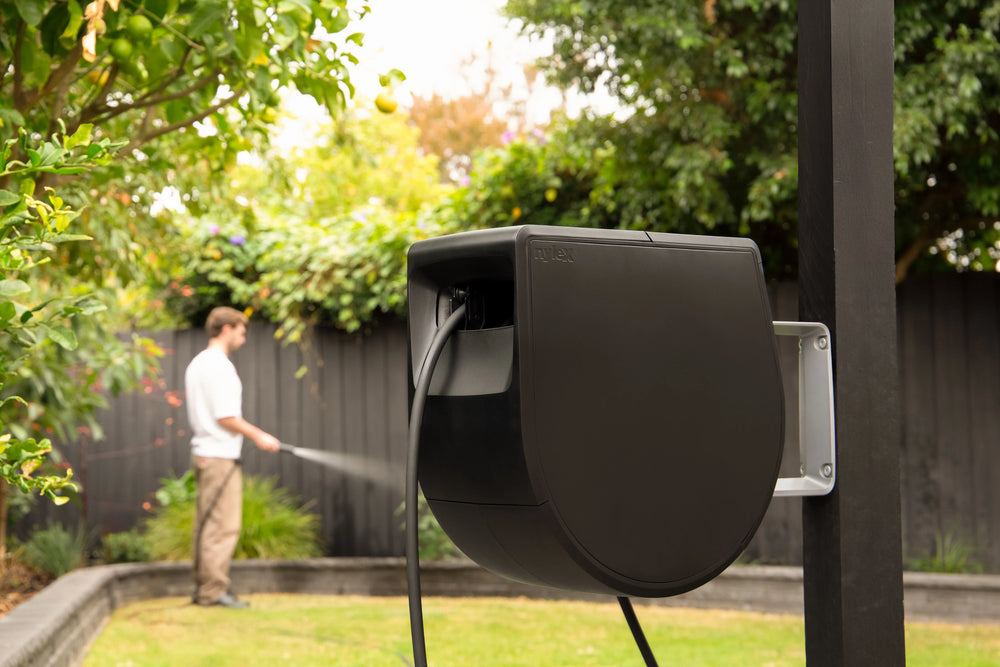The Best Time of Day to Water Your Garden (and Why it Matters)
Learn the best time of day to water your garden for healthier plants, less wa...
Read Article
The temperature has started to drop, the days are getting shorter and winter is just around the corner. With just a few short weeks until the cooler season arrives, it’s time to get your garden prepped and ready for the winter months. From mulching your garden and protecting your seedlings to pruning fruit trees, there’s plenty to be done, which is why it can be easy to overlook winter hose care accidentally. But without proper care, your garden hose could be subject to freezing temperatures, which can lead to potential damage.
Here’s how to protect your hose in winter.
While most of Australia tends to experience more mild winters compared to some parts of the world, there are certain regions, including Victoria, Tasmania and the New South Wales highlands, that often experience cooler conditions that call for some level of preparation.
In particular, garden hoses are prone to damage in sub-zero temperatures if not stored correctly. If your hose is left out overnight after watering your garden, the water left in your hose can freeze and expand. This pressure inside the hose can result in:
Cracking or splitting of the hose material,
Burst fittings or connectors, which often weaken in cold conditions, and
Damage to the internal components of your hose reel.
Dedicating a few minutes to winter hose care before the frost sets in could help you save time and effort in the long term by avoiding costly replacements and potential plumbing issues.
Protecting your hose in winter is easy when you know what you’re doing. Just follow these five simple steps:
Disconnect from faucets: Start by disconnecting your hose from the faucet. Be sure to remove any fittings or connectors, along with your hose.
Drain the hose completely: Take a few minutes to drain your hose completely. The easiest way is to elevate one end of your hose and allow gravity to work its magic. You can even drape it over the fence for a few minutes to help it drain.
Inspect for damage: Check your hose over for any damage before putting it in storage.
Coil properly: Coil your hose by bending a large loop with roughly a metre of hose. Continue to form loops of hose, stacking them on top of each other until you’ve completely coiled the full length of your hose.
Store indoors (garage/shed): When it comes to garden hose storage, be sure to keep your hose somewhere indoors, away from frost and moisture.
It’s not just your garden hose that needs protection during winter. Your hose reels can also get damaged during the cooler months without the right maintenance and care. That said, the right winter care comes down to what kind of hose reel you have.
Wall-mounted reels are typically fixed in place, so they can’t easily be removed during winter. Instead, once you’ve removed the hose from inside the reel, you should cover it with a waterproof cover to protect it from the elements. If possible, mount your hose reel in a sheltered spot to protect it year-round.
As for portable cart-style reels, you should store them indoors over the winter months with your garden hose. Be sure to keep them upright and on a flat surface to avoid any potential warping.
While storage can protect your hose reels during the cooler months, a little bit of maintenance can go a long way to promoting the longevity of your reel. So, before you pop your reel into hibernation for winter, give it a quick once-over:
Lubricate the moving parts to keep them spinning and prevent seizing during winter.
Inspect any metal components for rust. If you spot any, give it a gentle scrub with a wire brush to remove and follow with a spritz of rust-resistant spray or touch-up paint.
Check screws and fittings to make sure everything is secure and not corroding. Tighten or replace any that are loose or worn.
Now that we’ve covered the basics of winter hose care, here are a few extra tips to help you keep your garden hose and reel in top shape:
Use hose caps or plugs to prevent moisture, bugs and other pests from making themselves at home in your hose while it’s in storage.
Add insulation to outdoor taps to help prevent water from freezing inside your taps and causing costly damage.
Invest in freeze-proof outdoor taps for long-term protection.